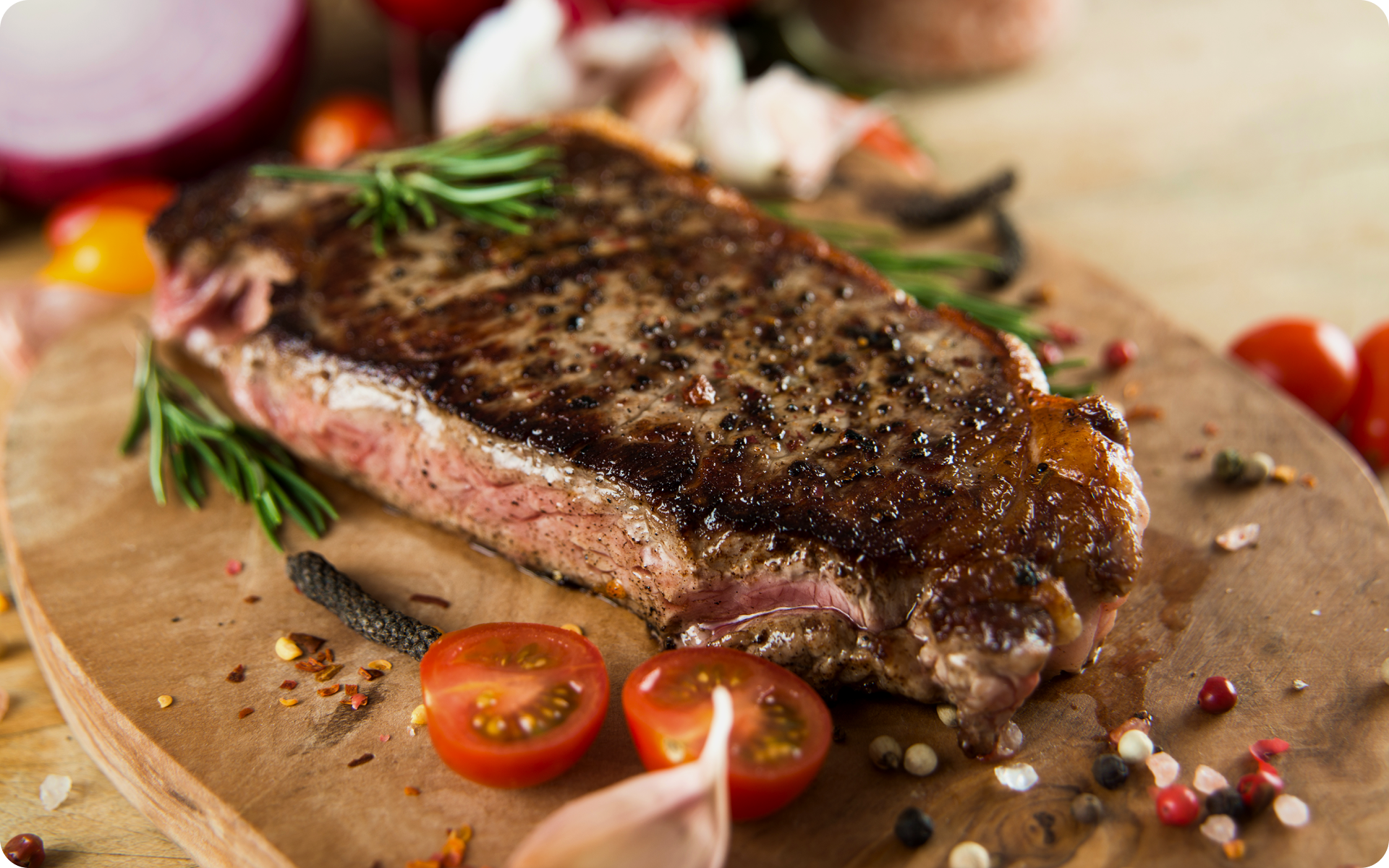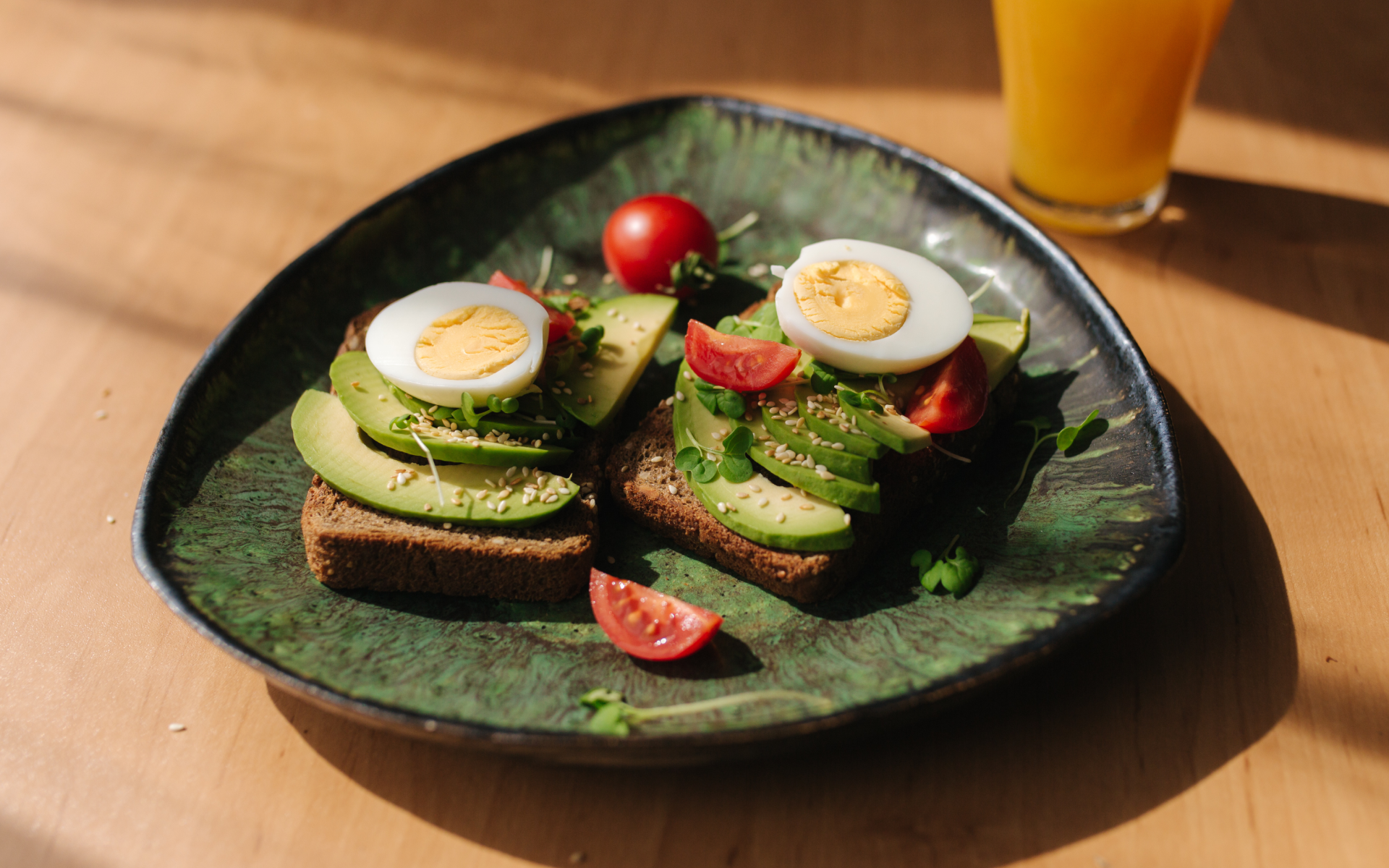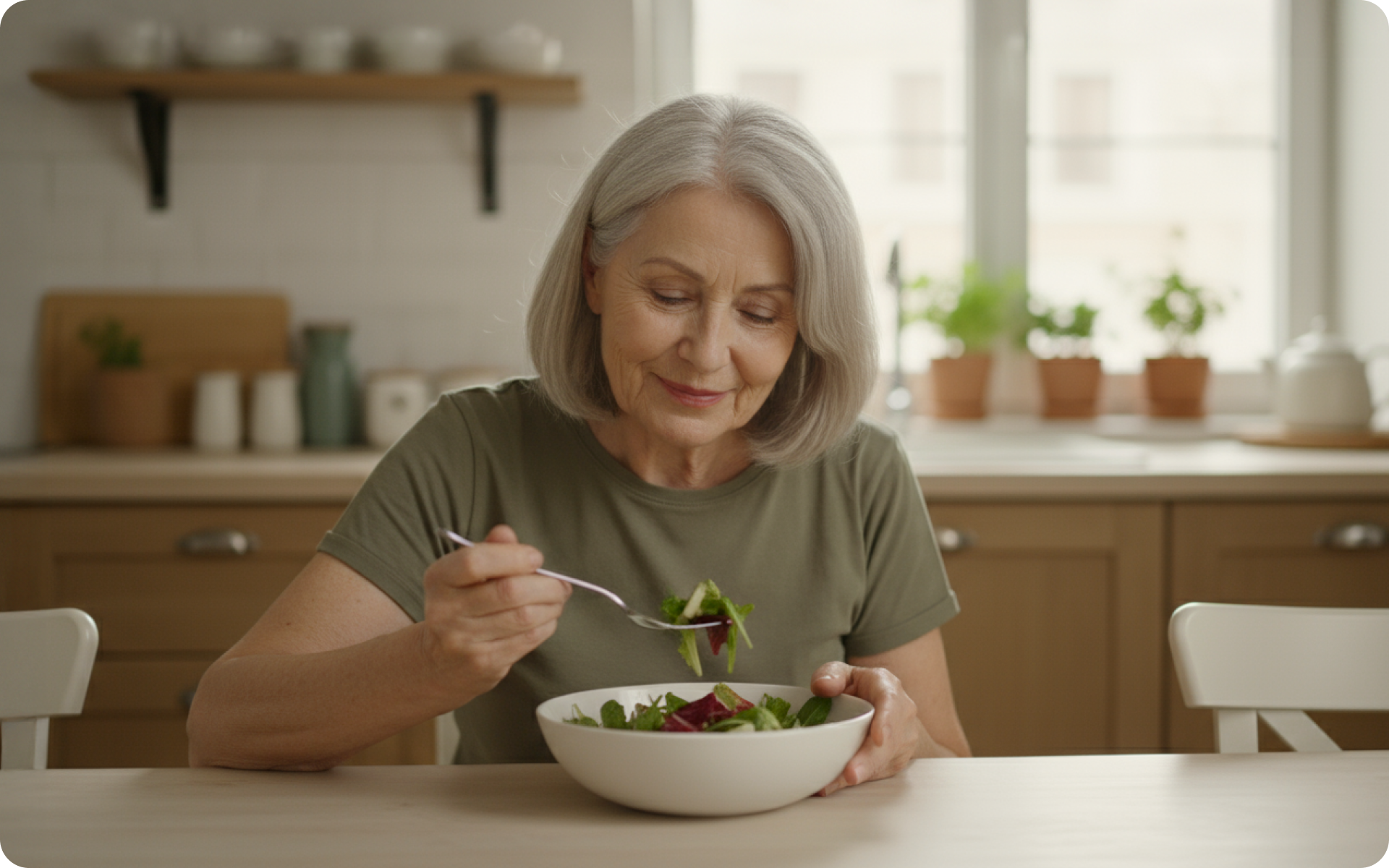It’s common to consume endless amounts of carbs in order to gain weight. For some, this approach is effective, but for others, it can be a recipe for disaster. If you find that overindulging in carb-heavy snacks and meals leads to bloating and sluggishness rather than actual weight again, perhaps it’s time to switch things up.
The solution could be to add high-calorie, low-carb foods to your diet. Not only are these foods a low-carb option, they can also help you gain weight safely and effectively – whether you’re a weightlifter who’s looking to bulk up or you’re simply trying to add a few extra pounds for health reasons.
In this article, we’ll show you 13 of the best high-calorie, low-carb foods that will help you achieve your weight gain goals while keeping you healthy and happy. So put down that slice of bread and let’s get started on the ultimate guide to safe and successful weight gain.
Will I Gain Weight If I Stop Eating Carbs?
Weight gain is more about how much you’re eating than what you’re eating, although carbs are an important part of a healthy balanced diet.
Let’s explain this in more detail. To gain weight, you must consume more calories than you burn. Carbs are often the most easily accessible form of calories and can contribute significantly to weight gain. However, all macronutrients – including protein and fat – can also provide calories and contribute to weight gain.
Protein and fat are both essential for building muscle and maintaining a healthy metabolism (11). Adding high-calorie, low-carb foods that are rich in these macronutrients to your diet can help you achieve your weight gain goals without relying solely on carbs.
What Is High-Calorie, Low-Carb?
It is possible for a food to be both high-calorie and low-carb (17). This may seem contradictory, but calories and carbs are two separate things.
Calories are a measure of the energy content of food, whereas carbs are one of the three macronutrients (along with protein and fat) that provide the body with energy (8).
Certain foods, such as nuts and seeds, are naturally high in calories but low in carbs. Other foods, such as whole-milk yogurt, may also be considered high-calorie and low-carb as long as the other ingredients are chosen carefully.
That being said, not all foods that are high in calories and low in carbs are good for weight gain. Some of these foods, such as processed junk foods, may contain a lot of calories and few carbs, but lack the essential nutrients your body needs to stay healthy and build muscle.
In addition, while low-carb diets are effective for weight loss, they may not be the best choice for those who are looking to gain weight. Your body needs carbs to function properly and cutting them out completely can leave you feeling fatigued and unmotivated (26).
So with that in mind, let’s look at 13 of the best high-calorie, low-carb foods that will help you gain weight safely and effectively.
Lean and toned up body isn’t just a far-fetched fantasy. Check out the BetterMe app and watch it propel your weight loss journey into high gear!
What Are the Best Low-Carb, High-Calorie Foods?
The foods on the list of high-calorie, low-carb foods to gain weight share a number of common characteristics:
- High in calories
- Low in carbs
- Contain a good balance of protein, fats, and other essential nutrients
- Easily digested
- Minimally processed
- Can be made at home
- Can be made into tasty meals or snacks
1. Avocados
In addition to being high in monounsaturated fats, fiber, and vitamins, avocados contain potent antioxidants such as carotenoids and tocopherols. These antioxidants can help reduce inflammation, protect cells from damage, and play a role in disease prevention (25).
Research has suggested that the regular consumption of avocados may improve heart health by reducing LDL cholesterol and triglyceride levels in the bloodstream (4). The fiber content in avocados also promotes healthy digestion and may help regulate blood sugar levels.
Here’s a high-calorie, low-carb meal idea using avocados:
- Slice an avocado in half and fill it with protein-rich quinoa, black beans, feta cheese, and diced tomatoes.
- Drizzle with olive oil and enjoy either as a side dish or main course.
2. Fatty Fish
The omega-3 fatty acids that are found in fatty fish are essential fatty acids, which means they cannot be produced by the body and must be obtained through diet. These fatty acids play a crucial role in brain function and development, reduce inflammation, and boost heart health (20).
Eating fatty fish regularly has been found to lower the risk of developing conditions such as heart disease, stroke, and type 2 diabetes. Fatty fish is also an excellent source of vitamin D, which is essential for strong bones and may help prevent a wide range of chronic diseases (14).
There are many types of fatty fish you can choose from, including salmon, mackerel, sardines, and trout. Salmon is a popular choice, as it is high in omega-3 fatty acids and rich in B vitamins (20).
Try this meal idea for a delicious high-calorie, low-carb dish:
- Rub a salmon fillet with olive oil, lemon juice, and your favorite herbs.
- Grill or bake for 10–15 minutes and serve with steamed vegetables.
3. Nuts and Seeds
Nuts and seeds are great sources of plant-based protein and healthy fats, which can help regulate appetite and promote feelings of fullness. They also contain fiber, vitamins, minerals, and antioxidants, which makes them a nutrient-dense snack option (15).
Studies have linked nut consumption to a reduced risk of heart disease, type 2 diabetes, and certain types of cancer. Nuts and seeds may also help lower inflammation in the body and improve blood sugar control, which is important for those who are looking to gain weight healthily (10).
While nuts and seeds pack a punch when it comes to nutrition, they aren’t particularly filling. Therefore, we recommend adding them to meals or snacks to make them more satisfying and healthy.
A crunchy salad topped with roasted almonds, chia seeds, and sunflower seeds makes a tasty meal or snack. You can also make your own trail mix by combining different nuts and seeds of your choice.
For more low-carb dessert ideas check out: “Low-Carb Desserts: The Dos And Don’ts Of Having A Treat On The Keto Diet”
4. Grass-Fed Beef
It’s not a coincidence that we specify grass-fed beef. Unlike grain-fed beef, grass-fed beef is believed to be higher in essential nutrients such as omega-3 fatty acids, vitamins A and E, and antioxidants (19).
The higher levels of omega-3 fatty acids and antioxidants in grass-fed beef may help reduce inflammation, improve heart health, and protect cells from oxidative damage.
Grass-fed beef is also higher in conjugated linoleic acid, which has been linked to health benefits including improved body composition (19).
The price point of grass-fed beef may be higher, and the taste and texture may be slightly different than grain-fed beef, but the health benefits are worth it. Grain-fed beef can be considered a high-calorie, low-carb meal plan as long as it is kept to moderate amounts.
Here’s a quick meal idea featuring grass-fed beef:
- Use butter, garlic, and your favorite herbs to marinate the steak and cook it on a skillet or grill.
- Serve with roasted vegetables for a tasty and nutritious meal.
Read more: Boxing Calories Burned: Lose Weight by Punching
5. Eggs
Eggs are perhaps the most versatile and nutritious food in existence. They’re full of protein, healthy fats, vitamins, minerals, and antioxidants. They contain all nine essential amino acids and are a great source of choline, which is important for cognitive function (24).
Regularly eating eggs provides nutrients that may reduce the risk of stroke, improve eye health, boost brain power, and support muscle growth (24). Furthermore, studies have suggested that eating eggs for breakfast can help regulate appetite and lead to better overall food choices throughout the day.
Eggs make a great high-calorie, low-carb addition to any meal. Try scrambling or baking eggs for breakfast, adding them to salads for lunch, or making deviled eggs as a savory snack.
6. Cheese
Cheese is an excellent source of protein, calcium, and vitamin D. It also provides essential amino acids and other nutrients, including phosphorus, zinc, and vitamin B12. Full-fat varieties such as cheddar, blue cheese, and mozzarella are higher in calories and fat than their low-fat counterparts (9).
The regular consumption of cheese may help with weight management and improve body composition, as the fat in it helps keep you feeling full for longer (9).
However, cheese can also be high in sodium and saturated fats, which are associated with an increased risk of heart disease and other health issues (12).
While it’s fine to enjoy cheese in moderation as part of a healthy diet, particularly when paired with other nutrient-dense foods such as fruits and nuts, too much cheese can lead to weight gain and other health problems.
Here’s a simple meal idea:
- Melt cheddar cheese on a grilled chicken breast or use it as a topping for a taco salad.
7. Beef jerky:
Beef jerky is a convenient, high-protein snack that is low in carbs. It is made from lean beef that has been dried and flavored. Beef jerky is an excellent source of protein, in addition to minerals such as iron and zinc (2).
It is also a good source of fats, including omega-3 fatty acids.
However, some types of beef jerky can be high in sodium, and some brands may use preservatives or additives that have questionable health effects. When you choose beef jerky, you should opt for options that are made from grass-fed beef and don’t contain any harmful additives.
Simple meal idea:
- Pair beef jerky with almonds or other nuts for a high-protein, low-carb snack.
8. Bacon
Sure, bacon isn’t exactly a healthy food, but it can still be enjoyed in moderation as part of a balanced diet. Bacon is an excellent source of protein and fats, including omega-3 fatty acids. It also contains vitamins and minerals, including B vitamins and zinc (5).
Bacon can also be a great addition to high-calorie, low-carb meals, as it provides plenty of flavor with minimal carbohydrates (5).
However, bacon is quite high in sodium and saturated fat and consuming too much can lead to weight gain and an increased risk of heart disease and other health problems.
Simple meal idea:
- Wrap a piece of cooked bacon around an avocado half for a delicious snack.
9. Coconut Oil
Coconut oil is high in saturated fat, but it’s considered by some to be a “healthy” fat as it contains medium-chain triglycerides (MCTs).
MCTs are metabolized differently to other types of fats and may help reduce body weight and improve overall health. It also contains lauric acid, which may help support immunity and reduce inflammation (16).
Coconut oil is a versatile cooking oil that can be used in a variety of dishes, such as stir-fries, curries, and baked goods. It has a mild coconut flavor and aroma that adds depth to savory dishes.
Simple meal idea:
- Use coconut oil to sauté vegetables such as mushrooms, onions, and peppers for a flavorful side dish.
10. Dried Coconut/Coconut Milk
Dried coconut and coconut milk are both great sources of healthy fats. Dried coconut is high in fiber and can help regulate blood sugar levels, reduce cholesterol, and support gut health, while coconut milk is a creamy dairy alternative (3).
It also contains minerals including manganese, iron, copper, and magnesium. It’s an excellent source of medium-chain triglycerides (MCTs) (3).
Simple meal idea: Blend frozen bananas with coconut milk for a creamy smoothie or use coconut milk in oatmeal for extra creaminess.
Looking for a way to break the vicious cycle of weight loss and tone up all the jiggly parts? Watch the extra pounds fly off and your muscles firm up with the BetterMe app!
11. Soybean Sprouts
Vegetables are rarely ever classified as high-calorie simply as they have so few calories. However, soybean sprouts are an exception to the rule, offering a good source of high-calorie nutrition. Compared to other vegetables, they are much lower in carbs and higher in fat, protein, and calories.
Soybean sprouts are a great source of B vitamins and minerals such as iron, zinc, magnesium, and potassium. They also contain phytonutrients that may help reduce inflammation and improve heart health (18).
Simple meal idea:
- Top your taco salad with soybean sprouts for added crunch and nutrition.
12. Dark Chocolate
Chocolate often gets a bad rap due to its high sugar content, but dark chocolate can be a healthful treat when enjoyed in moderation.
Dark chocolate is rich in antioxidants and healthy fats that can help reduce inflammation and improve heart health. It also contains small amounts of minerals such as iron, magnesium, and potassium (10).
It’s important to keep in mind that most commercial dark chocolates contain added sugar and other unhealthy ingredients, so you should choose one with a minimal ingredient list for the most health benefits.
Simple meal idea:
- Top your oatmeal with a few pieces of dark chocolate for extra sweetness and flavor.
13. Lard
Lard is a type of fat that is rendered from pork. It is high in calories and fat, but it is also a good source of healthy monounsaturated fats. In addition, lard provides essential vitamins and minerals, such as vitamin D, phosphorus, and zinc.
Lard produced from pigs that have been fed an omega-3 fortified diet was found to have a positive impact on blood lipid levels in mice (13). Lard is also an excellent substitute for butter and other vegetable oils when cooking or baking.
While it is high in calories and low in carbs, it is also high in saturated fats, which have been linked to an increased risk of heart disease and other health issues. It’s best to limit the consumption of lard and other foods that are high in unhealthy fats.
Simple meal idea:
- Use lard to sear and cook a steak or other types of meat for a flavorful low-carb meal.
Explore more low-carb meals for family options in our previous post.
Read more: Calories Burned Water Aerobics, or Why Aquafit is Good For Weight Loss
FAQs
How can I gain weight fast without carbs?
Eating high-calorie, low-carb foods to gain weight can be an effective strategy. When combined with resistance training, it can help you gain weight quickly.
Some foods you must have on your high-calorie, low-carb foods list for weight gain include nuts and nut butter, avocado, full-fat dairy, fatty fish such as salmon and tuna, olive oil, and healthy protein sources such as eggs and lean meats.
High-calorie, low-carb meals such as a chicken and vegetable stir-fry with olive oil and avocado or a protein-packed smoothie with nuts, seeds, and Greek yogurt are great options for quick weight gain without relying heavily on carbs. However, carbs are still an important part of a healthy, balanced diet and can certainly help add calories for weight gain.
What foods are high in calories and carbs?
Foods that are high in both calories and carbs include:
- Potatoes: One medium-sized potato contains approximately 37 grams of carbs and 164 calories (22). Add a healthy fat as a topping for flavor and extra calories.
- Bananas: A medium-sized banana has approximately 26 grams of carbs and 113 calories (6). Pair it with some nut butter for extra calories, healthy fats, and protein.
- Rice: One cup of cooked white rice contains approximately 53 grams of carbs and 242 calories (23).
- Pasta: 100 grams of cooked pasta has approximately 31 grams of carbs and 157 calories (21).
- Bread: Two slices of white bread contain approximately 27 grams of carbs and 146 calories (7).
While these foods are high in carbs and calories, it’s helpful to pair them with foods that add other essential nutrients such as protein and healthy fats.
Can you bulk on low-carb?
Yes, it is possible to bulk on a low-carb diet. The key is to focus on high-calorie, low-carb foods that are also rich in protein and healthy fats (1). This will help provide the necessary calories for weight gain while also helping maintain muscle mass and promoting a healthy metabolism.
The Bottom Line
High-calorie, low-carb foods can be a great addition to any healthy diet. They provide essential nutrients and minerals and also offer a good source of energy.
Just remember to enjoy these foods in moderation and get plenty of other nutrient-dense foods such as fruits, vegetables, lean proteins, and whole grains.
DISCLAIMER:
This article is intended for general informational purposes only and does not serve to address individual circumstances. It is not a substitute for professional advice or help and should not be relied on for making any kind of decision-making. Any action taken as a direct or indirect result of the information in this article is entirely at your own risk and is your sole responsibility.
BetterMe, its content staff, and its medical advisors accept no responsibility for inaccuracies, errors, misstatements, inconsistencies, or omissions and specifically disclaim any liability, loss or risk, personal, professional or otherwise, which may be incurred as a consequence, directly or indirectly, of the use and/or application of any content.
You should always seek the advice of your physician or other qualified health provider with any questions you may have regarding a medical condition or your specific situation. Never disregard professional medical advice or delay seeking it because of BetterMe content. If you suspect or think you may have a medical emergency, call your doctor.
SOURCES:
- 10 Essential Grocery Store Buys for Weight Loss (2023, eatthis.com)
- A comprehensive review of drying meat products and the associated effects and changes (2022, ncbi.nlm.nih.gov)
- Antioxidant and Nutritional Properties of Domestic and Commercial Coconut Milk Preparations (2020, ncbi.nlm.nih.gov)
- Avocado Consumption and Risk of Cardiovascular Disease in US Adults (2022, ncbi.nlm.nih.gov)
- Bacon (n,d,nutritionfacts.org)
- Bananas, ripe and slightly ripe, raw (2020, fdc.nal.usda.gov)
- Bread, white, commercially prepared (2019, fdc.nal.usda.gov)
- Calories: Total Macronutrient Intake, Energy Expenditure, and Net Energy Stores – Diet and Health – NCBI Bookshelf (1989, ncbi.nlm.nih.gov)
- Cheese and Healthy Diet: Associations With Incident Cardio-Metabolic Diseases and All-Cause Mortality in the General Population (2019, ncbi.nlm.nih.gov)
- Dark chocolate: An overview of its biological activity, processing, and fortification approaches (2022, ncbi.nlm.nih.gov)
- Dietary Protein and Muscle Mass: Translating Science to Application and Health Benefit (2019, mdpi.com)
- Effect of Cheese Intake on Cardiovascular Diseases and Cardiovascular Biomarkers (2022,nih.gov)
- Effects of Omega-3-Rich Pork Lard on Serum Lipid Profile and Gut Microbiome in C57BL/6NJ Mice (2022, ncbi.nlm.nih.gov)
- Health Benefits of Fish (n,d,doh.wa.gov)
- Health Benefits of Nut Consumption (2010, ncbi.nlm.nih.gov)
- Health Effects of Coconut Oil-A Narrative Review of Current Evidence (2018, pubmed.ncbi.nlm.nih.gov)
- Low Carbohydrate Diet (2023, ncbi.nlm.nih.gov)
- Macronutrients, Phytochemicals, and Antioxidant Activity of Soybean Sprout Germinated with or without Light Exposure (2023, ncbi.nlm.nih.gov)
- Nutritional Benefits from Fatty Acids in Organic and Grass-Fed Beef (2022, ncbi.nlm.nih.gov)
- Omega-3 Fatty Acids Fact Sheet for Consumers (2022, ods.od.nih.gov)
- Pasta, cooked, unenriched, with added salt (2019, fdc.nal.usda.gov)
- Potatoes, flesh and skin, raw (2019, fdc.nal.usda.gov)
- Rice, white, medium-grain, cooked, unenriched (2019, fdc.nal.usda.gov)
- The Golden Egg: Nutritional Value, Bioactivities, and Emerging Benefits for Human Health (2019, ncbi.nlm.nih.gov)
- The Odyssey of Bioactive Compounds in Avocado (Persea americana) and Their Health Benefits (2019, ncbi.nlm.nih.gov)
- Why Are Carbohydrates Important? (2023, verywellhealth.com)











